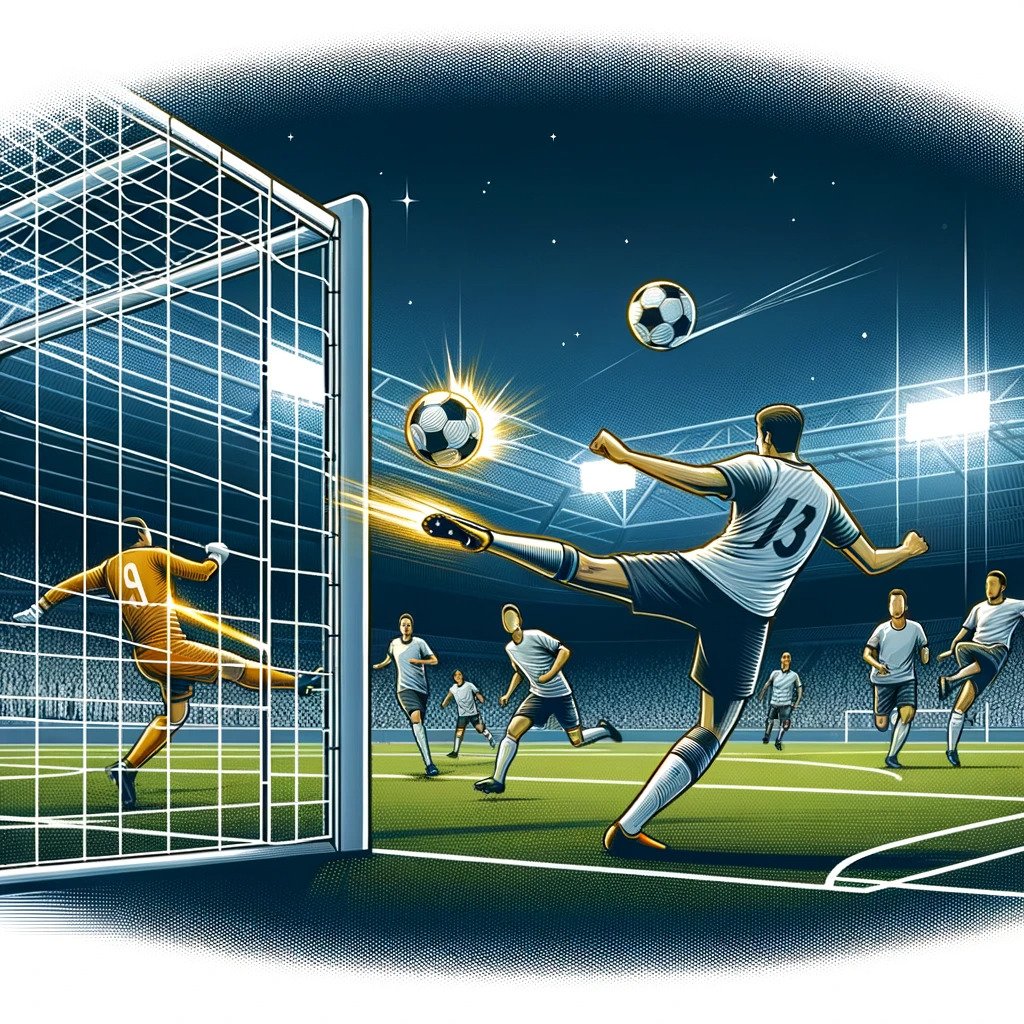Reflecting on a soccer match I once played, where our team was losing by a goal, I realized the pivotal role of clearances. Amidst the pressure, with the other team pressing us relentlessly, one of our defenders executed a great clearance. This defensive move involved swiftly getting the ball out of our own end, turning a critical moment into an opportunity. The ball went flying out of bounds, allowing us to regroup and eventually tie the game. It was a vivid example of how a clearance is not just a simple concept but a lifesaver, adeptly preventing goals and keeping the team in the game.
In soccer, a clearance is fundamental at all levels, from youth leagues to the professional level. It’s a basic skill every player should learn, embodying both strategy and quick thinking. Clearances prove crucial in maintaining a team’s defensive strength, often transforming a potential loss into a chance for victory. They’re the unsung heroes on the field, essential yet often overlooked.
What Is a Clearance in Soccer?
In soccer, a clearance is an essential defensive strategy, exemplified vividly in an intense soccer match. It’s when a player, often under pressure, swiftly moves the ball away from their own goal to mitigate scoring threats. This technique becomes crucial, especially when your team is struggling against an attacking other team that’s better at maintaining offensive pressure.
Reflecting on a match where our fabulous goalkeeper showcased amazing clearances, I recognized the significance of this skill. Despite being attacked relentlessly, these clearances were pivotal in keeping us in the game. Although we lost the match, the goalie’s efforts were a source of team pride.
Similarly, a teammate once executed a clearance so effectively that it landed straight in the other team’s goal, causing both teams to end up giggling. This instance highlighted that a clearance need not be a fancy or over-the-top move; even a simple, well-executed kick can effectively deflect danger and turn the tides of a match.
Types of Clearances
In soccer, clearances are a tactical maneuver, essential in various game scenarios. They vary based on the situation, players’ abilities, and their individual strengths. Understanding the different types of clearances is crucial for players at all levels.
Header Clearance
The header clearance is a strategic move where a player jumps and uses their head to clear the ball from danger. This method is particularly effective but is generally not allowed for players under 12 in most leagues, due to concerns about the safety of performing headers.
Volley Clearance
In a volley clearance, the player kicks the ball directly out of the air, before it has a chance to hit the ground. This type of clearance sends the ball far across the field, requiring excellent timing and coordination.
Slide Tackle Clearance
The slide tackle clearance involves a player sliding on the ground, using their feet to push the ball away from potential threats. While effective, it’s a risky strategy that can lead to a penalty or even injury if not performed with care.
Boot Clearance
Finally, the boot clearance is arguably the most common form, especially among youth soccer teams. Here, a player simply kicks the ball as hard as possible to get it out of their half of the pitch. This method is straightforward and often used in urgent defensive situations.
Importance of Clearance in soccer

In soccer, clearances are a pivotal aspect of the game, serving multiple strategic purposes. They are essential for teams, especially when defending against aggressive opponents.
Preventing Goals and Regaining Possession
The primary function of a clearance is to prevent goals by moving the ball away from the danger zone as quickly as possible. Whether a player uses their head, foot, or knee, the goal is to distance the ball from your own net. Additionally, clearances can lead to regaining possession. A clearance directed far from the goal allows the defending team to switch from defense to attack, transforming a defensive move into an offensive opportunity.
Reducing Pressure and Maintaining Possession
Clearances also play a critical role in reducing pressure on the defending side. When the opposing team is constantly attacking, a well-timed clearance can provide the defenders a moment to regroup and catch their breath. This brief respite is vital in reorganizing and strengthening the team’s defense. Furthermore, clearances can aid in maintaining possession. Clearing the ball to a teammate helps the team retain control and continue their gameplay seamlessly.
Changing the Point of Attack
Another strategic use of clearances is in changing the point of attack. By clearing the ball to the other side of the field, a team can disrupt the opponent’s formation and create new attacking routes. This tactic can be particularly effective in catching the opposing team off-guard and opening up the field for advancing play.
When to Use a Clearance in Soccer
In soccer, clearances are crucial, especially when a team is under pressure from the opposing team. The primary goal is to get rid of the ball quickly and efficiently. Unlike a blindly kick out of the area, defenders often have the opportunity to collect themselves and strategically pass the ball to a teammate. This tactic not only clears the danger but also maintains possession.
Clearances are necessary in common situations like when the opposing team is pressing high up the field, exerting pressure on the defensive team. Additionally, during instances when the goalkeeper has the ball and needs to swiftly move it out of their half of the field, a clearance becomes imperative. Similarly, if a defender is closed down by an opposing player, a quick clearance can prevent losing possession.
Another typical scenario is during a corner kick, when players are jumbled together in a tight space. Here, a well-timed clearance can effectively relieve pressure and potentially help the team regain possession of the ball. In these moments, clearances are not just about removing the ball from danger but also about creating opportunities for counter-attacks.
Soccer Technique and Execution of Clearances
The technique and execution of clearances in soccer is a skill that comes naturally to experienced players, but it’s vital for beginner soccer players to understand the nuances.
Body Positioning for Clearances
Proper body positioning is crucial for effective clearances. Beginners and seasoned soccer players alike must understand this fundamental. You should be facing the direction you want the ball to go, with your feet shoulder-width apart and knees slightly bent. This stance ensures your weight is evenly distributed on both feet, and your arms should be slightly away from your body to maintain balance.
Kicking Technique for Clearances
The kicking technique for clearances is uniquely different from regular passes or shots. For longer clearances, the ball should be struck with the laces of your cleat. For shorter clearances, using the inside of the foot is more effective. Ensure your kicking leg is straight and your non-kicking foot is pointing toward the target. Always remember to follow through with your kick.
Timing and Decision-Making in Clearances
Timing is vital in executing a clearance. Aim to make contact with the ball just before it hits the ground for optimal control of both direction and distance. In high-pressure situations, quick and efficient decision-making is key. You must rapidly assess the situation and decide whether to clear the ball out of bounds or to a teammate. If opting for out of bounds, aim for the farthest point from your goal; if to a teammate, target their feet or chest for better chances of maintaining possession.
Common Clearance Mistakes and How to Avoid Them
Mistake #1: Kicking the Ball Too Hard
One of the most common clearance mistakes is kicking the ball too hard. While trying to get the ball as far away from your goal as possible might seem beneficial, it can be counterproductive. If the ball is kicked too hard, it becomes difficult for teammates to control, potentially going out of bounds or returning to the opposing team, leading to another attack. Instead of focusing on power, prioritize accuracy and clearance to a specific spot on the field where your team can initiate a counterattack.
Mistake #2: Clearing the Ball Straight Up in the Air
Another mistake is clearing the ball straight up in the air. This might appear as a safe option, but it’s actually dangerous. Clearing the ball in the middle of the field gives the opposing team time to regroup and possibly create another scoring opportunity. To avoid this, try to clear the ball to the side of the field, using the sidelines as an extra defender and reducing the chance for the offense to regain control.
Mistake #3: Hesitation between Passing and Clearing
Hesitation in decision-making can be detrimental. The split-second hesitancy between deciding to pass or clear can lead to critical mistakes. For example, a cross comes in, and while initially planning to clear, you spot an open teammate. Attempting a pass but instead letting muscle memory take over can result in the ball floating over their head, giving the offensive team an advantage.
Similarly, a defensive player might overthink their clearance, take an extra touch, and allow the offense to steal the ball, leading to a prime scoring opportunity for the opponent.
Overcoming Mistakes: Trusting Intuition and Acting Swiftly
To overcome these clearance mistakes, it’s vital to trust your intuition and act swiftly. Quick, decisive actions often lead to more success on the field. Developing this instinctual response can mean the difference between a lapse in judgment that costs a victory and a well-executed clearance that safeguards your team’s position in the game.
How to Avoid Playing near the Clearance Area
Every football player plays a crucial role in defending their side of the pitch, balancing both attack and defend roles. Let’s see how you can avoid playing near the clearance area.
The Role of Defensive Strategy
Every football player has a crucial role in defending the pitch, encompassing the dual roles of attack and defense. Implementing a good defensive strategy and establishing essential formations that are impenetrable is key. This involves defense players keeping a keen eye on the attacking team to prevent them from finding any gap in the defensive walls that could lead to a goal. Creating effective defensive strategies is vital for a team’s success on the field.
Importance of a Contingency Plan
In soccer, a contingency plan is a must. This alternative plan comes into play particularly when your strategic formations face challenges, and your first line of defense starts to break down. Having a back-up strategy allows the main defense to regroup without losing the game. It’s crucial not to give up or lose focus, as these moments can drastically change the performance and outcome of the game.
Emphasis on Practice and Correction
Regular practice and focusing on the basics are essential to overcome weaknesses. Through consistent training sessions, drills, and exercises, players can sharpen their skills. After each previous match, it is important for the coach to guide the team through their mistakes and how to correct them. This not only improves individual capabilities but also enhances overall team performance.
Conclusion
Understanding clearances in soccer is not just about the physical act of moving the ball away from one’s goal. It’s a nuanced art that involves strategic thinking, precise technique, and teamwork. From perfecting various types of clearances to avoiding common mistakes, players must continuously hone their skills. Moreover, the importance of defensive strategies, contingency planning, and regular practice cannot be overstated. Each player’s role, whether in executing a clearance or supporting their team, contributes significantly to the game’s outcome.
Frequently asked questions
-
What counts as a clearance in football?
A clearance in football (soccer) is a defensive action where a player removes the ball from their team’s goal area or penalty box to prevent the opposing team from scoring. It typically involves a quick, forceful kick or header to move the ball to a safer area on the pitch, away from the immediate threat.
-
What are the three types of clearance?
The three main types of clearance in soccer are:
-
- Header Clearance: Using the head to clear the ball away from the goal area.
- Volley Clearance: Striking the ball out of the air with a kick before it hits the ground.
- Slide Tackle Clearance: Sliding on the ground to use the feet to clear the ball, often used as a last resort due to its higher risk.
-
What is a howler in soccer?
A howler in soccer is an expression commonly used when watching a game, especially involving teams like the English national team. It refers to a comical mistake made on the field, typically attributed to goalkeepers who fail to stop a shot, leading to a goal. It can also apply to players who have scored an own goal, leaving them sullen-looking and often red-faced. This phrase comes in handy to describe such glaring errors during play.

